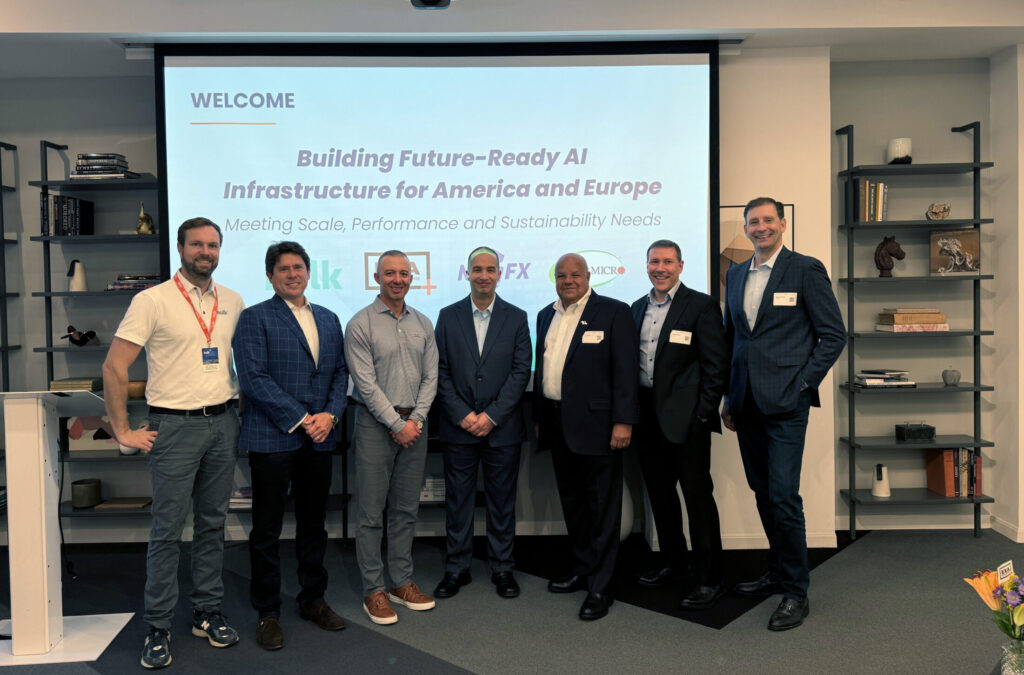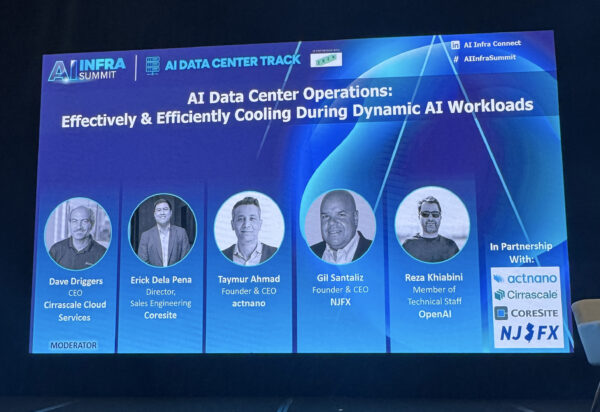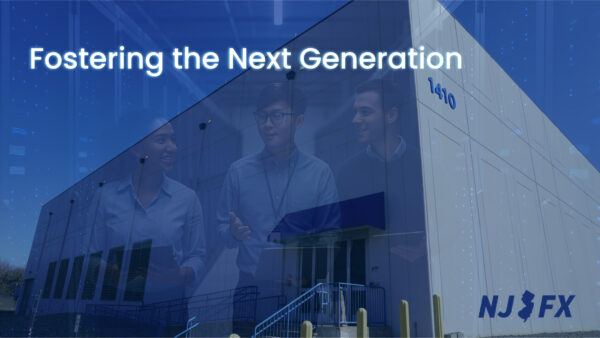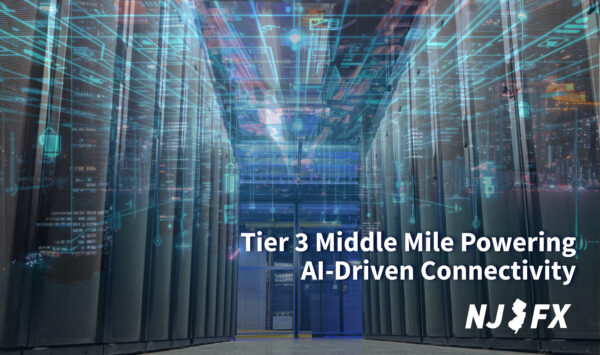Powering AI Growth in Future Ready Data Centers from US to Norway
An NJFX Article
Nov 6, 2024

On October 15th, 2024, the vibrant heart of New York City’s Financial District became the epicenter of groundbreaking discussions as NJFX co-hosted a dynamic morning briefing. Esteemed leaders from CBRE, NVIDIA, Supermicro, EXA Infrastructure, and Bulk Infrastructure took the stage sparking conversations that are paving the industry.
This premier event served as a pivotal node for network designers, financial executives, and industry innovators all eager to navigate the rapidly evolving landscape of AI. At the core of the briefing was a bold and ambitious question: How can we scale networks to harness the transformative power of AI? The consensus pointed to the necessity of strategic collaboration. Melding the power from data centers with cutting-edge hardware solutions to create seamless, robust connectivity tailored for the next generation of AI applications. The event began with an in-depth overview of the current data center landscape across North America and Europe, led by Stuart Dyer at CBRE. With vacancy rates hovering at just 1%, and pre-leasing becoming the norm, it is evident that AI is driving an unprecedented demand for power and capacity.
Stuart mentions, “Northern Virginia, for example, has already leased over 75% of its planned 2026 capacity, highlighting the urgency for expanding infrastructure. In 2024 alone, 500MW were brought online in Northern Virginia, all of which were fully contracted, with an additional 800MW expected in 2025.”
As AI continues to rise, the infrastructure supporting it must evolve to meet increasingly demanding requirements. Scalable and flexible data centers capable of handling high-density applications are no longer optional — they are essential. CBRE emphasized this shift, noting that enterprises now need to secure data center capacity 24 to 36 months in advance to keep pace with escalating demand.
Malcolm deMayo from NVIDIA underscored the critical advancements needed to support AI’s exponential growth. Malcolm mentioned the critical need for accelerated computing solutions to efficiently handle AI workloads. “We’re the only semiconductor company in the world that issues or creates a new architecture every year. It’s never been done before, and these are radically new architectures,” Malcolm said.
NVIDIA’s breakthroughs in GPUs and data center architectures have revolutionized computing power, achieving a 1,000x acceleration in workloads over the past eight years while reducing power consumption by 350x. Central to this transformation are NVIDIA’s Grace and Hopper systems, which deliver twice the power efficiency of traditional CPUs, making them perfectly suited for the intense demands of AI applications.
Malcolm shared a interesting case study, “We lowered the total cost of ownership at PayPal by 70%, enabling us to drive a spark capacity workload by 5x, which can generate cost reductions between 70 and 80%. This represents a massive opportunity.” This significant cost efficiency not only enhances performance but also makes advanced AI solutions more accessible and sustainable for businesses.
NVIDIA’s innovative approach is setting new standards in the industry, demonstrating how strategic advancements in hardware and architecture can unlock unprecedented potential for AI-driven networks and applications.
As the conversation deepened around scaling AI-driven networks, Supermicro’s advancements emerged as crucial components in ensuring sustainable and efficient operations. Michael Watson from Supermicro presented the latest breakthroughs in hardware designed to meet the escalating demands of AI infrastructure.
Supermicro unveiled their cutting-edge liquid cooling technology aimed at reducing energy costs and addressing the substantial power and cooling requirements of high-density AI servers. Michael emphasized, “Supermicro has the largest server portfolio among all OEMs, making us not only first to market but also offering one of the broadest ranges of compute capabilities. We have deployed more AI GPU systems globally than any other OEM, demonstrating our experience and leadership in accelerated computing.”
This leadership in the AI hardware space is further exemplified by Supermicro’s highly efficient power supplies. This efficiency extends seamlessly into their liquid cooling systems, which can save up to 40% on electricity costs compared to traditional air cooling.
Supermicro’s focus on energy-efficient hardware is a strategic response to the critical metric of PUE in data centers. “The more efficient your data center is, the more you’ll be saving,” Michael stated. This commitment to reducing PUE underscores Supermicro’s dedication to maximizing cost savings and enhancing the sustainability of AI-powered infrastructures.
It is becoming evident that adding cutting-edge equipment to future-ready infrastructure like NJFX is paramount for sustaining AI advancements. The integration of specialized hardware and innovative cooling solutions ensures that data centers can handle the increasing computational demands while maintaining operational efficiency.
Gil Santaliz at NJFX stated, “In the era of AI, downtime is not an option. Our Tier 3 robust infrastructure design ensures maximum uptime and reliability, providing our clients with the confidence that their AI applications are supported by a stable and secure facility.” This commitment to reliability is crucial for businesses that depend on uninterrupted access to their AI-driven services.
Future-ready infrastructure encompasses more than just physical space; it involves the strategic deployment of advanced equipment that can adapt to the dynamic needs of AI workloads. By investing in scalable and flexible solutions, data centers like NJFX are not only meeting current demands but are also preparing for future growth. This proactive approach minimizes downtime, enhances performance, making it a smart investment for enterprises aiming to leverage AI’s full potential.
NJFX is setting new benchmarks in data center design, making it an ideal partner for businesses looking to scale their AI capabilities. Gil added, “Collaboration is key to our success. By partnering with leading technology providers and infrastructure experts, we can continuously enhance our offerings and stay at the forefront of AI infrastructure development.” These partnerships enable NJFX to leverage cutting-edge technologies and integrate best practices into their data center operations.
As connectivity remains the backbone of advanced AI-driven infrastructures, the role of managed optical services has never been more critical. Charles Thomas from EXA Infrastructure delved into how the demand for robust and scalable optical networks is evolving to support the growing AI landscape.
“The types of customers who are interested in managed optical is much broader than it was before. Government, OTTs, and occasionally very large enterprises – now it’s about everybody.” Charles stated, highlighting the democratization of high-capacity optical services driven by the pervasive growth of AI applications across diverse industries.
Charles explained, “Typically, customers request an hour in multiple targets, and it’s driving them away from discrete circuits. Managing optical spectrum services becomes incredibly difficult on the submarine system because bandwidth is finite.” This constraint necessitates innovative network design to maximize the utility of available bandwidth.
“We have to get creative on how we design a network to the maximum value out of the available bandwidth that exists on the submarine system,” Charles emphasized, underscoring the need for ingenuity in network architecture to support the exponential growth of data demands.
“For the planned submarine systems, they’re exponentially larger than anyone would have thought about. It’s an interesting transitional point—the OTTs are now called hyperscalers, and now they’re referred to as super scalers, among other names.” This rebranding reflects the scaling up operations and the increasing complexity of managing vast, high-capacity networks.
Charles concluded by highlighting EXA Infrastructure’s commitment to driving innovation in optical network management and ensuring their solutions remain at the forefront of industry demands, “As the demand for AI continues to surge, our approach must evolve to provide flexible, scalable, and efficient optical solutions that meet the diverse needs of today’s enterprises and tomorrow’s innovators.”
Emphasizing the essential role of global connectivity in supporting AI-driven infrastructures is Bulk Infrastructure who are enhancing transatlantic data transmission through the Havfrue Cable.
Kristian Kofoed-Solheim from Bulk Infrastructure illuminated Bulk’s pivotal role in global data center connectivity through their ownership of the Havfrue Cable. “Bulk Infrastructure is committed to providing unparalleled connectivity solutions to support the growing demands of AI and other high-performance applications,” Kristian said. “Havfrue is the only submarine cable connecting New Jersey to Norway creating a unique and resilient path for data transmission route essential for supporting expansive AI operations.”
The Havfrue Cable, equipped with state-of-the-art technology, offers a robust and high-capacity link that is essential for maintaining low-latency and high-reliability connections. “This cable is a game-changer for enterprises and hyperscalers looking to expand their global footprint,” Kristian explained. “It not only enhances our connectivity offerings but also ensures that our clients can achieve seamless and efficient data flows across continents.”
Bulk Infrastructure’s data centers in the Nordics are renowned for their advanced infrastructure and sustainability practices.
“In an era where data is the new currency, having reliable and high-capacity connectivity is paramount,” Kristian stated. “The Havfrue Cable not only strengthens our network capabilities but also positions us as a pivotal hub for global data traffic, enabling our clients to leverage AI and other advanced technologies to their fullest potential.”
Looking ahead, we see the next phase in our industry characterized by even greater collaboration and innovation. Enhancing data center designs, expanding renewable energy sources, and integrating advanced cooling solutions will be crucial to meeting the demands of high-density AI applications. The evolution of AI and digital infrastructure is far from over—what’s next will be about creating smarter, more adaptable networks that ensure scalability, sustainability, and resilience in the face of rapid technological change.
Want to learn how you can Expand your Network to New Heights
Reach out and talk to an expert today







